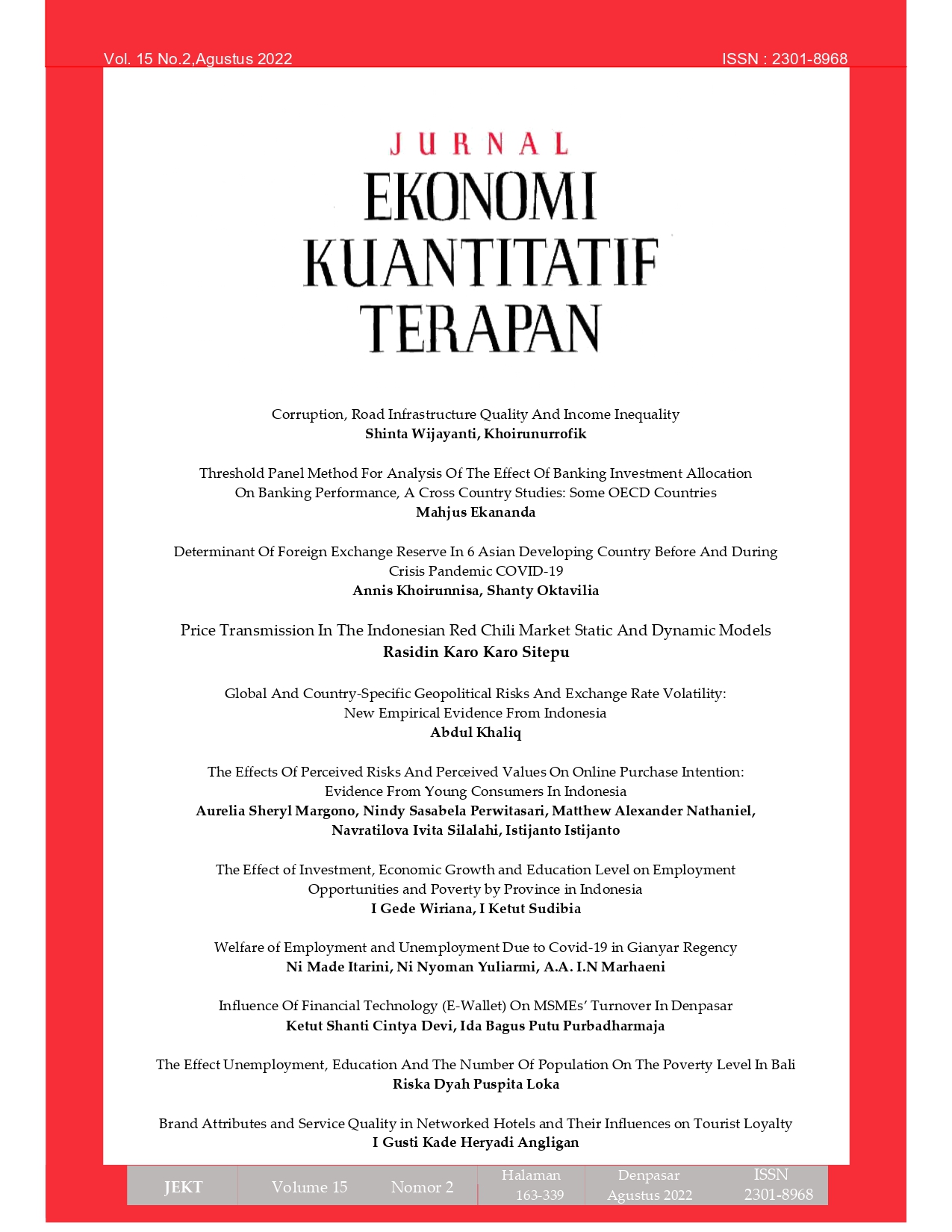Corruption, Road Infrastructure Quality and Income Inequality
Corruption, Road Infrastructure Quality and Income Inequality
Abstract
This study investigates the relationship between the corruption cases in road infrastructure and the quality of road infrastructure and its effect on income inequality in Indonesia. Using actual data on cases of road infrastructure corruption that have been in court and a fixed-effect data panel estimation model with standard errors clustered by island regions in Indonesia, this study shows a significant negative correlation between road infrastructure corruption cases and road infrastructure quality. This study also found a significant positive correlation between cases of road infrastructure corruption and income inequality moderated by economic growth. The finding indicates that the more corruption cases occur in an area, the lower the quality of road infrastructure and the increasing income inequality as measured by the Gini index (gini ratio).
Downloads
References
Gorondutse, A.H & Hilman, H., (2014). Mediation effect of customer satisfaction on the relationships between service quality and customer loyalty in the Nigerian foods and beverages industry: Sobel test approach, International Journal of Management Science and Engineering Management, 9:1, 1-8
Gupta, S., Davoodi, H., Alonso-Terme, R. (1998) Does Corruption Affect Income Inequality and Poverty?. IMF Working Paper No. WP/98/76.
Gyimah-Brempong, Kwabena (2002). “Corruption, Economic Growth, and Income Inequality”. Article in Economics of Governance.
Hassan, S. A., Zaman, K., & Gul, S. (2015). The Relationship between Growth-InequalityPoverty Triangle and Environmental Degradation: Unveiling the Reality. Arab Economic and Business Journal, 10(1), 57–71.
Istiqamah, et. al (2018). Pengaruh pertumbuhan ekonomi terhadap ketimpangan pendapatan dan kemiskinan (studi provinsi-provinsi di Indonesia. E-Jurnal Perspektif Ekonomi dan Pembangunan Daerah Vol.7 No. 3, September- Desember 2018.
Kenny, C (2009a). Measuring corruption in infrastructure: Evidence from transition and developing countries. The Journal of Development Studies 45(3): 314–332.
Kuznets, Simon. (1995). “Economic Growth and Income Inequality”. American Economic Review.
Kyriacou AP, Muinelo-Gallo L and Roca-Sagales O (2015). Construction corrupts: Empirical evidence from a panel of 42 countries. Public Choice 165(1/2): 123–145.
Olken, B.A., (2006). Corruption and The Cost of Redistribution: Micro Evidence from Indonesia. Journal of Public Economics, 90:853-870.
Saragih, P.N dan Khoirunurrofik, K., (2022). Road quality in Indonesia: Is It Linked to Special Allocation Funds and Political Competition?, Jurnal Ilmu Ekonomi Volume 11 (1), 2022: 57 - 72
Sobel, Michael. E (1982). “Asymtotic Confidence Intervals for Indirect Effects in Structural Equation Models”. Sociological Methodology, 13. 290-312
Sutijah, Sucihatiningsih, D.W.P, Muhsin (2020). Determinant of Fisherman’s Income in Kedung Subdistrict Jepara Regency. Journal of Economic Education.
Todaro, Michael, P. dan Stephen C. Smith. (2003). Pembangunan Ekonomi di Dunia Ketiga, edisi kedelapan. Jakarta : Erlangga.
Undang-Undang Nomor 31 Tahun 1999 tentang Pemberantasan Tindak Pidana Korupsi.
Undang-Undang Nomor 38 Tahun 2004 tentang Jalan.
Varvarigos, D., and Arsenis, P., (2015). Corruption, Fertility, and Human Capital. Journal of Economic Behavior and Organization, 109:145-162.




















